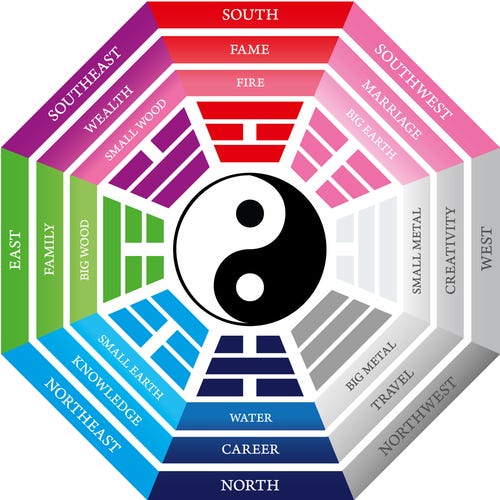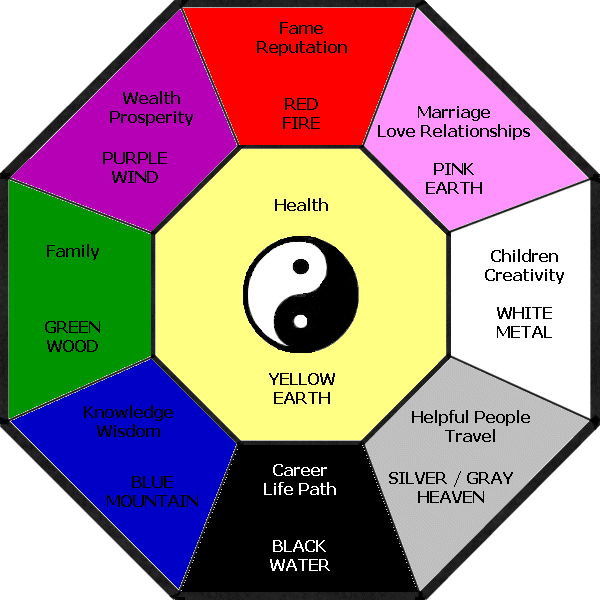Unlocking Harmony: Checking Out the Power of Fengshui Principles
Unlocking Harmony: Checking Out the Power of Fengshui Principles
Blog Article
Integrate Your Home With Feng Shui Principles
In today's hectic and hectic world, finding a sense of tranquility and balance within our very own homes has come to be an increasingly vital goal. One method to achieve this is by including the old method of Feng Shui right into our home. By aligning our environments with the principles of Feng Shui, we can create an atmosphere that promotes consistency, positive energy, and well-being. But where do we begin? Exactly how can we bring this age-old wisdom into our homes? In this discussion, we will certainly explore the essentials of Feng Shui, from selecting the right colors and materials to setting up furnishings for optimum power flow. Join us on this journey as we uncover the keys to harmonizing your home with Feng Shui concepts.

Understanding Feng Shui Essentials
Comprehending the essentials of Feng Shui is crucial for producing a balanced and harmonious living setting in your house. Feng Shui, an ancient Chinese technique, concentrates on organizing and arranging rooms to advertise favorable energy circulation and improve health. By incorporating Feng Shui concepts right into your home, you can develop a space that not only looks visually pleasing but likewise cultivates a sense of harmony and balance.
The very first fundamental principle of Feng Shui is the concept of yin and yang. Yin stands for the passive, soft, and mild energy, while yang stands for the active, vibrant, and energised power.
One more crucial element of Feng Shui is the plan of furniture and items in an area. The method highlights the flow of energy, or qi, throughout an area. Clutter and barriers can disrupt this flow, so it is crucial to keep areas tidy and organized. In addition, the placement of furniture should enable easy motion and accessibility to windows and entrances.
Choosing the Right Colors and Products
When it comes to Feng Shui, choosing the suitable colors and products for your home plays a critical function in producing a balanced and harmonious home. Feng Shui principles stress making use of certain shades and products to advertise positive power flow and develop a feeling of well-being.
In Feng Shui, shades are connected with the five all-natural components: Wood, Fire, Earth, Metal, and Water. Each aspect has its own matching colors that can be made use of to improve particular areas of your home. Brown and eco-friendly are associated with the Wood aspect and can be used in the East and Southeast locations of your home to advertise development and abundance. Red and orange, on the other hand, are connected with the Fire aspect and can be used in the South location to enhance interest and creativity.
Products additionally play a significant function in Feng Shui. Making use of timber furnishings and flooring can bring the power of development and vigor right into your home.
Planning Furniture for Favorable Energy Circulation
To maximize the positive energy circulation in your home, it is necessary to meticulously prepare your furnishings according to Feng Shui concepts. The plan of furnishings plays a vital duty in developing a well balanced and harmonious space (fengshui). When done correctly, it can advertise a feeling of health and enhance the circulation of positive power throughout your home

Furthermore, the positioning of furniture ought to sustain the function of each area. In the room, as an example, the bed needs to be placed diagonally opposite the door, enabling you to have a clear sight of the entry while existing down - fengshui. This plan promotes a feeling of security and relaxation
In the living area, purpose for a layout that motivates conversation and link. Organize seating in such a way that promotes in person interaction, producing a warm and inviting ambience.
When arranging furnishings,Remember to also think about the concepts of equilibrium and balance. Creating a feeling of stability in each area can help to promote an unified flow of power.
Enhancing All-natural Light and Air Flow
Enhancing all-natural light and air flow is an important aspect of developing a unified and well-balanced living room, according to Feng Shui principles. All-natural light is taken into consideration a vital resource of favorable power in a home. It not only lightens up the space yet additionally enhances the general mood and ambience.
Air flow is similarly essential in Feng Shui as it promotes the circulation of positive power, learn the facts here now recognized as chi, here are the findings throughout the space. Furthermore, integrating plants in the area can boost air quality and create an all-natural circulation of power.
Incorporating Feng Shui Symbols and Components
In the technique of Feng Shui, integrating icons and components is important for developing a well balanced and harmonious setting in your home. Feng Shui believes that certain icons and components have specific energies that can influence the circulation of power, or chi, in a space. By strategically putting these aspects and symbols, you can improve positive power and advertise a feeling of wellness in your house.
One typical sign made use of in Feng Shui is the Bagua map. This map is a representation of the different areas of your home and how they match to various facets of your life, such as riches, wellness, and partnerships. By straightening the Bagua map with the design of your home, you can identify areas that might need focus and make modifications to enhance the power circulation.
Another crucial element in Feng Shui is making use of the five natural aspects: wood, fire, steel, earth, and water. Each element is related to different high qualities and can be made use of to stabilize and boost the power in a room. As an example, timber represents development and can be included with the use of plants or wooden furniture. Fire symbolizes enthusiasm and can be represented by candle lights or a fire place. By including these components thoughtfully, you can develop a unified and balanced atmosphere that sustains your wellness and goals.

Verdict
Including Feng Shui principles right into your home can produce a unified and well balanced setting. fengshui. By recognizing the fundamentals of Feng Shui, picking ideal shades and products, preparing furniture for positive energy circulation, and boosting all-natural light and air circulation, you can create a room that promotes positive energy and health. Integrating Feng Shui icons and components can better boost the power in your home. Accepting these principles can assist develop a more serene and harmonious home.
Feng Shui, an old Chinese practice, concentrates on organizing and organizing spaces to promote favorable energy flow and boost well-being.To optimize the favorable power flow in your home, it is essential to meticulously organize your furnishings according to Feng Shui principles. Feng Shui believes that certain symbols and components have certain powers that can affect the circulation of power, or chi, in a room. By understanding the fundamentals of Feng Shui, selecting suitable shades and materials, setting up furniture for positive energy circulation, and enhancing natural light and air blood circulation, you can produce a space that promotes favorable power and wellness. Incorporating Feng Shui symbols check here and elements can even more boost the power in your home.
Report this page